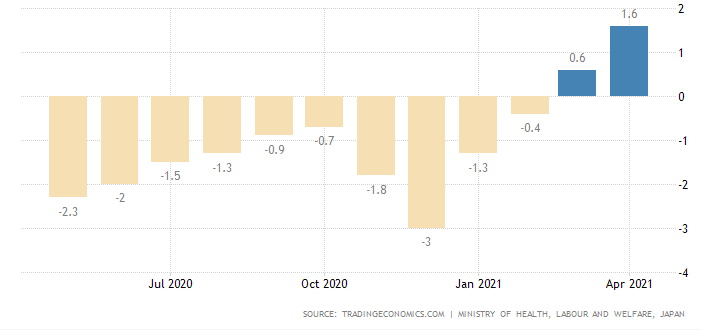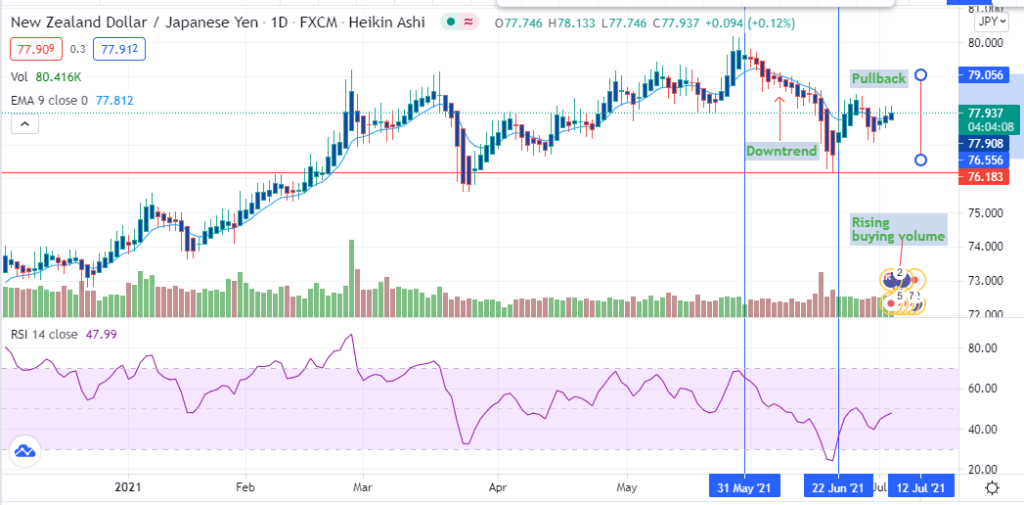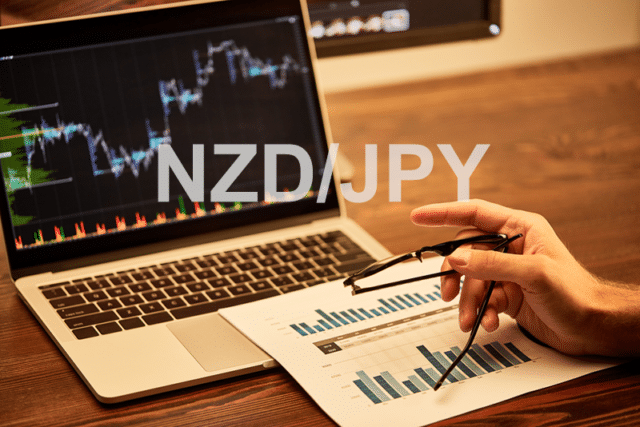- Consumer spending in Japanese households rose 0.1% in April 2021, beating estimates at -2.2% with the price index at -0.1%.
- The average monthly income in Japan also increased to 543,063 yen per household.
- The RBNZ may raise the OCR by 25 basis points in November 2021.
The NZDJPY pair lost 0.68% as of 8:24 am GMT on July 5, 2021, from the previous day’s close. It opened trading at 78.41, hit a high of 78.14 before moving to a low of 77.77.

Consumption expenditures in Japanese households
Consumer spending in households rose 0.1% in April 2021, beating estimates at -2.2% with the price index at -0.1%. As of April 2021, consumption expenditures stood at a high of 13.0% (YoY) in households with two or more persons.
Expenditures and wage earnings
In May 2021, household expenditures decreased to 7.2% from the earlier record of 13% (real terms) in April 2021. The government survey per household indicated that expenditures had risen 12.4% (nominal calculations) to 301,043 yen in April 2021. While monthly expenditures were surging, the average monthly income also increased (per household) to 543,063 yen.
This increase represented a +2.3% rise in nominal calculations and +2.8% (YoY). The Japanese yen will be positively affected if the household expenditures for May 2021 (YoY) beat consensus estimates at 10.9% and monthly forecasts at -3.7%.
Japan is also expected to release the average cash earnings (wage growth) report on July 5, 2021, where it stood at 1.6% in April 2021.

Japan’s wage growth
April 2021 saw an upward revision in the wage growth to 1.6% from 0.6%. The industries with high earnings included mining (+5.1%), electricity generation (+0.2%), real estate (+9.2%). There was a 0.7% decline in earnings in the health sector as well as a 2% fall in education income.
New Zealand debt levels
On Monday, July 5, 2021, NZ Treasury warned the government that debt levels were heading into an unsustainable trajectory. Health spending came into a critical focus in the wake of the Covid-19 pandemic and the superannuation benefit (for the aged population). The Treasury proposes the increase of taxes and a policy change in the superannuation age shift to 67. Officials are wary of a surge in the net debt to GDP by 2060.
Superannuation expenditure is expected to increase to 7.6% of GDP in 2061 from 5% of GDP in 2021. Healthcare spending would also rise from 6.9% to 10.5% (over the same period). This means that on an annual basis, healthcare costs will add up to NZ$ 155 billion from NZ$20 billion (in 2021). On its part, the superannuation’s cost would grow to NZ$112 billion (per year) from NZ$15 billion.
While the Reserve Bank of New Zealand (RBNZ) kept the official cash rate (OCR) at 0.25 for May 2021, it indicated that it would raise the rate in Q2 2022. There is a high chance that the central bank will review the OCR by a hike of 25 basis points by November 2021. The RBNZ is expected to hold its next policy review meeting on July 14, 2021.
Also, read about the correlations of the NZDUSD pair to trade it more efficiently.
Technical analysis
The NZDJPY pair began a pullback on June 22, 2021, after a downtrend started on May 31, 2021. The uptrend is expected to continue in the short term, especially if the market manages to reach 79.056.

The pair is also staying above the 9-day EMA at 77.812. The price may seek to retest support at 76.183. The rising volume and the RSI’s uptick suggest price may continue climbing.




